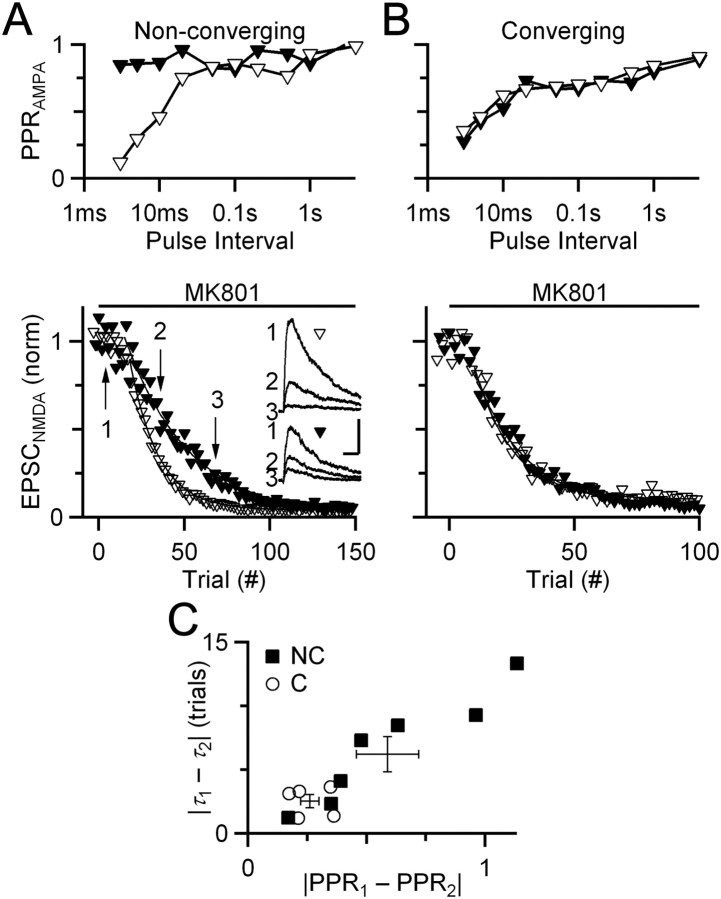Figure 4.
Experiments using MK-801 indicate that converging endbulbs have a similar probability of presynaptic neurotransmitter release. A, B, Representative experiments showing the effects of MK-801 on converging and nonconverging endbulbs. Top, PPR curves for two endbulbs that end on two simultaneously recorded BCs (A) or a single BC (B) held at −70 mV. Bottom, Effects of MK-801 on NMDA receptor-mediated EPSCs for nonconverging (A) or converging (B) endbulbs. To measure NMDA EPSCs, BCs were held at +40 mV in the presence of NBQX. Inputs were stimulated alternately every 10 s. Arrows indicate the timing of the NMDA EPSCs shown in the inset. Lines are exponential fits to the data used for measuring the τ of decay. Inset scale bars are 10 ms and 0.5 nA. C, Correlation between similarity in PPR and in decay of NMDA EPSC. The abscissa is the distance between PPR curves (as in Fig. 1C). The ordinate is the difference in the τdecay from experiments similar to A and B. Converging endbulbs cluster at low distance values, whereas nonconverging endbulbs are more widely distributed in both measures. Crosses show the population averages, which are significantly different (p < 0.05, t test; NC = 5 pairs, NNC = 7 pairs). Slices are from mice aged P16–P21.

